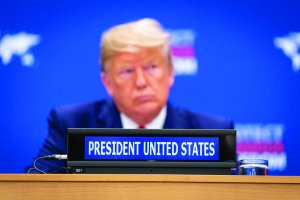On September 19 - 21, 2025, the administration announced a new $100,000 fee on new H-1B petitions. Major U.S. tech and consulting employers—many among the program’s largest sponsors - argue the fee undermines competitiveness and throttles innovation; some are openly modeling whether to shift more work into India-based Global Capability Centers. Indian industry and officials, for their part, warn of disruption for a population that consistently receives about 70% of all approved H-1Bs, and local media trace market jitters to the fee. Even sympathetic voices in tech leadership call the price tag “too high” relative to the policy goal.
That reaction reprises the familiar frame in U.S. debates over high-skill immigration: do visas fill critical talent gaps that fuel innovation, or do they depress pay for domestic STEM workers? Empirical and official assessments have long acknowledged the wage channel; early 2000s analyses, for example, described foreign IT inflows as a “moderating force on wage increases,” and Alan Greenspan later argued that tight skilled-immigration quotas had propped up a “privileged elite” and that easing such constraints would reduce skilled wage premia.
But there is a more consequential reading of the history. Years before today’s headlines, an INET Working Paper highlighted research making an extraordinary claim: in the run-up to the Immigration Act of 1990 (IMMACT90) - the law that created the H-1B - proponents and employers allegedly agreed with labor on the wage effects, at least behind closed doors (Weinstein 2017). According to that account, the actual rationale for H-1B and IMMACT90 was to tamper with the wage mechanism on which native workers rely for their ability to earn, and weaken the bargaining power of domestic STEM workers by augmenting labor supply via demographic panic. An internal NSF analysis captured the logic succinctly:
“A growing influx of foreign PhDs into U.S. labor markets will hold down the level of PhD salaries to the extent that foreign students are attracted to U.S. doctoral programs as a way of immigrating to the U.S.”
Although today’s proponents often dispute that wage mechanisms adequately clear STEM labor markets, the NSF economist in the internal study explicitly credited market wages with resolving past shortages:
“There have been numerous instances during the last 45 years in which high-ranking national figures have called for national action to increase the flow of college students into NS&E fields… These shortages, however, were swiftly eradicated without major focused policy initiatives through market forces and minor adjustments by employers.”
- Myles Boylan, Internal 1986 NSF/PRA study
On this telling, the purpose of H-1B was to interfere with that wage-clearing mechanism—introducing a parallel “compensation” channel (a visa) that has value to foreign workers but not to natives, thereby suppressing cash wages for U.S. STEM workers. According to this account, NSF commissioned two studies with complementary public/private functions at a time when internal projections suggested STEM PhD salaries could reach $100,000 by ~2000 (the “pessimistic scenario” in internal documents). One was an esoteric internal study (Boylan, 1986, NSF/PRA) containing detailed demand curves which explicitly allowed for market-clearing wage increases. The other, however, was a public study that was crafted as a demographic narrative, stripped of market mechanisms, which framed the problem as a looming “shortfall” caused by the smaller Generation X cohort—thereby creating urgency for legislative action without foregrounding wage adjustment as the remedy. By removing the wage-adjustment machinery from the public analysis, the argument was made, and the need for higher compensation could be recast as a structural shortage, bolstering the case for an expanded high-skill visa channel.
Read through this lens, the present controversy over the new $100,000 H-1B fee is not merely a reprise of the “do visas hurt or help wages?” debate. Rather the foundational premise of the H-1B framework was already an acknowledgment—shared by all sides in private—that increasing foreign STEM supply would restrain U.S. wage growth. The debate then is not really about whether wage pressure exists but rather about how explicitly policy should admit, harness—or counteract—it.
So what has the actual effect been of this program? While it is difficult to get an accurate estimate of the visa program on wages, we can do some back of the envelop rough, exploratory calculations on the magnitude of the effect on the tech labor market.
First, let us review the mechanisms through which the contemporary pipeline works. The United States doesn’t just hire through H-1B; it draws from multi-year channels. F1 and M1 visas bring in foreign students for academic or vocational training. After graduating from a US institution students can apply for an Optional Practical Training (OPT) visa, which allows international students on F-1 visas to work in the U.S. for up to 12 months after completing their degree, gaining practical experience in their field of study. Students in STEM fields may qualify for a 24-month extension, allowing for a total of 36 months of work authorization. This can be seen as the pre-H1B stage of the pipeline. There is also a program for gifted skilled people, which is separate.
According to US government data, in 2024 there were approximately 381,140 people with work authorization through a form of practical training, with approximately half of these being in computer science or engineering. Meanwhile, despite the stated cap of 85,000 visas, US Customs and Immigration Services approved almost 400,000 H-1B petitions in FY-2024 with about 70 to 75% of these being for computer related and engineering jobs. Put together that is roughly half a million jobs. The Bureau of Labor Statistics estimates the size of the US workforce in STEM occupations to be approximately 10.7 million. This suggests that these channels represent about 5% of the US STEM labor force. Regardless of one’s belief about the positive or negative effects on the economy, it is hard to make the argument that this is not a significant shift of the labor supply curve. The claim that is sometimes made, that the flow is “too small to move wages” is not credible—especially in metro-concentrated markets where software dominates the occupational mix and where there are few buyers.
Despite its manifest effects on domestic labor markets, proponents of the H1B visa program often make the argument that it is a way for US employers to access “the best and the brightest.” After all industry giants like Elon Musk, Satya Nadella and Sunder Pichai all came in on these visas. This argument is worth a careful assessment. If wages are broken down into five levels, with Level 3 representing the median local wage for an occupation, prevailing H1B wage rules allow employers to meet compliance at Level 1 or Level 2 - wage levels that sit below the local median. Analyses by the Economic Policy Institute and others document that a majority of positions are certified at those lower levels; the Department of Labor’s wage framework was not built to ensure median-plus pay, and in practice it does not. This doesn’t mean all H-1B workers are underpaid; it does mean the system permits staffing models inconsistent with the “star talent” narrative that’s used to sell the public on the program.
If employers truly need once-in-a-generation talent, the law already provides a mechanism that does not rely on lottery luck or entry-level wage bands: the EB-2 National Interest Waiver9 (NIW). USCIS’s January 2025 policy update re-clarified the Dhanasar test (national importance, well-positioned, and on-balance benefit) and tightened the articulation of underlying EB-2 eligibility. For genuine stars, NIW is the straightforward path—and it is inherently more honest about who deserves a fast track. H-1B, by contrast, is a mass program that has—by design—become a staffing channel for ordinary (if valuable) roles. Policymaking should reflect that difference.
A disturbing effect of the structure of this visa program that is often ignored is the potential for abuse of power. Tying status to a specific employer—while a person waits in an employment-based green-card queue measured in years to decades for many H1B holders—changes the nature of workplace bargaining. Workers can switch jobs in theory, but the per-country caps and backlogs make the option costly and risky, particularly for Indian and Chinese nationals who dominate the queue. That structural dependency is why the “indenture” analogy resonates for many practitioners, even when everyone is in formal legal compliance.
If we broaden the lens beyond wages and power to macro consequences, the research literature is somewhat mixed and nuanced. Some papers find that more H-1Bs raise ethnic patenting and spillovers to innovation; others identify crowding-out of similarly situated domestic workers or distributional effects that vary across cities, firms, and cohorts. What the literature does not do is resolve the policy question for us: it shows that immigration can both foster innovation and reallocate income—often in ways that are hard to see if we only track headline GDP or patent counts. The sign on innovation is frequently positive; the sign on wage incidence for close substitutes is often negative or ambiguous, and local labor markets matter.
An understanding of the political economy driving the debate around H1B requires us to be candid about who benefits. The winners are not only India-headquartered IT services firms like Tata Consultancy Services, Infosys, Wipro, Cognizant—long rumored to dominate filings—but also U.S. tech and finance giants that lead the sponsor tables in recent data. In the first half of 2025, for instance, Amazon led approvals, with TCS close behind; and Congress has noticed a dissonance between heavy program use and domestic layoff cycles. Debating whether “foreign consulting firms” or “Big Tech” benefit more misses the broader point: both ecosystems have optimized around the same labor-supply valve.
Seen from India, the sending country for almost two thirds of H1B holders, the picture is complicated. Industry groups and families who built plans around U.S. jobs see disruption and worry about near‑term income and remittances, which remain a significant household buffer. But there is also a notable counter‑narrative: if the United States prices more work off its shores, Indian firms and global capability centers stand to absorb a greater share of high‑value tasks at home. That shift would blunt classic brain‑drain dynamics and deepen local ecosystems in Bengaluru, Hyderabad, and Pune—exactly the kind of capacity‑building that can compound over time. In that framing, the fee is not simply a hurdle; it is a catalyst for rebalancing where value is created, with India capturing more of the upstream design, data, and platform work rather than only downstream implementation.
China’s reaction underscores a different lesson: frontier talent is now treated as strategic national infrastructure. Beijing has long invested to keep highly trained scientists and engineers anchored domestically, and commentary around DeepSeek’s launch was laced with reports and rumors that core engineers faced travel restrictions or even temporary passport surrenders after the model debuted. Whatever the specific facts in any one episode, the signal is unmistakable—human capital is being securitized alongside intellectual property. For the United States, that should concentrate the mind: openness to extraordinary global talent must be matched by serious policies to cultivate and retain our own, or we will simply arbitrate a zero‑sum contest in which others grow the capabilities we choose not to build.
One largely invisible piece of the H-1B story is how deeply U.S. firms have built talent pipelines in India (and, earlier, China)—from campus recruiting and endowed partnerships to full-blown engineering and R&D centers—while industry’s direct funding of research at U.S. universities remains relatively modest. India now hosts roughly 1,700–1,800 Global Capability Centers (GCCs) for multinationals, generating about $64–65B in annual revenue and employing approximately 1.9–2.0M staff; these centers increasingly do knowledge-intensive engineering and R&D, not just back-office work. U.S. and other multinationals also run long-standing R&D labs inside India’s top academic ecosystems, for example IBM Research India, and sign memoranda of understanding with IITs that bundle joint research, internships, and hiring pipelines. Campus recruiting at IITs by global tech firms is routine, with recurring high-end offers and pre-placement arrangements. Meanwhile, at home, industry accounts for only ~6% of total U.S. university R&D funding (FY2023), with the federal government still shouldering the majority. That asymmetry makes it rational—if uncomfortable—to “buy” training where it’s cheap and abundant, then hire or transfer talent to U.S. teams, rather than invest proportionately in U.S. graduate-training. The result is a neat loop: build and test talent at scale offshore, import a slice on H-1Bs, and keep U.S. university funding at arm’s length—a model that complements firms’ cost control goals and helps explain why the wage channel keeps reappearing in the debate.
Conclusion
The archival record matters. If, as the contemporaneous materials suggest, the very purpose of the H1B framework was to hold down the cash wages of domestic STEM workers by expanding a parallel channel of compensation that natives cannot access, then today’s change is notable less for its size than for its candor. The new $100,000 fee does not resolve the deeper design choices that depress wages and tilt bargaining power—but it does mark an explicit public acknowledgment that the program has price effects on the U.S. labor market.
Seen that way, the fee is a first step, not a fix. By bringing the fully loaded cost of a new H1B hire closer to what the local market would require to recruit and retain comparable talent, it narrows the wedge between visa-enabled staffing and hiring Americans at market rates. As employers internalize more of the true cost, wage offers for domestic candidates should strengthen—and with them, the incentive for bright young Americans to invest in the years of training that computer science and engineering demand. Now, more than ever, American Universities need support in offering that training.
Finishing the job will require aligning channels with stated goals. If the true goal is to have access to the best and brightest of global talent, employers can use EB-2 National Interest Waivers to fast-track truly exceptional contributors. Retaining the H1B visa program at all requires an explanation, to the American public and specifically to native technical STEM talent as to why they should not enjoy the full benefits of the bargaining table leverage in a capitalist market economy.
At a minimum, if the visa program is retained at all, H1B must be reserved for genuine specialty roles paid at considerably higher than the local median and the government must relieve the employment-based green-card backlogs that turn temporary status into dependence. This can be done in parallel with expanding domestic capacity—funded graduate seats, employer training consortia, and regional apprenticeship pipelines—so that rising wages translate into a deeper U.S. bench rather than a scramble to offshore work.
A policy born to suppress wage signals may not be corrected overnight. But this fee is an overdue admission that prices matter. If policymakers pair that acknowledgment with median-plus pay standards, real mobility, backlog relief, and a merit channel for true stars, the United States can remain open to extraordinary global talent while rebuilding the home-grown pipeline on honest terms.







